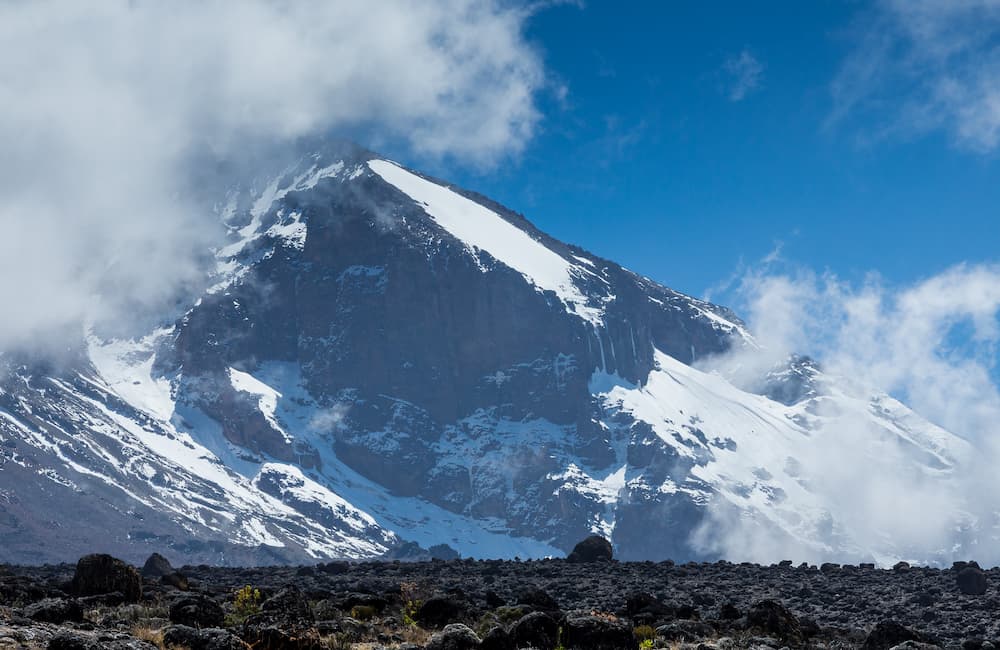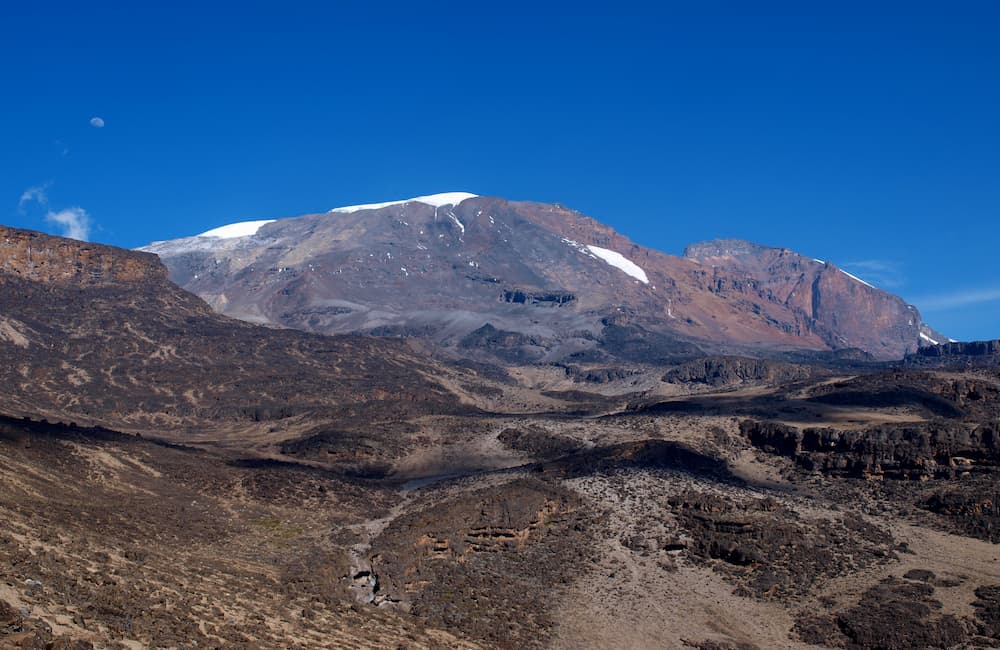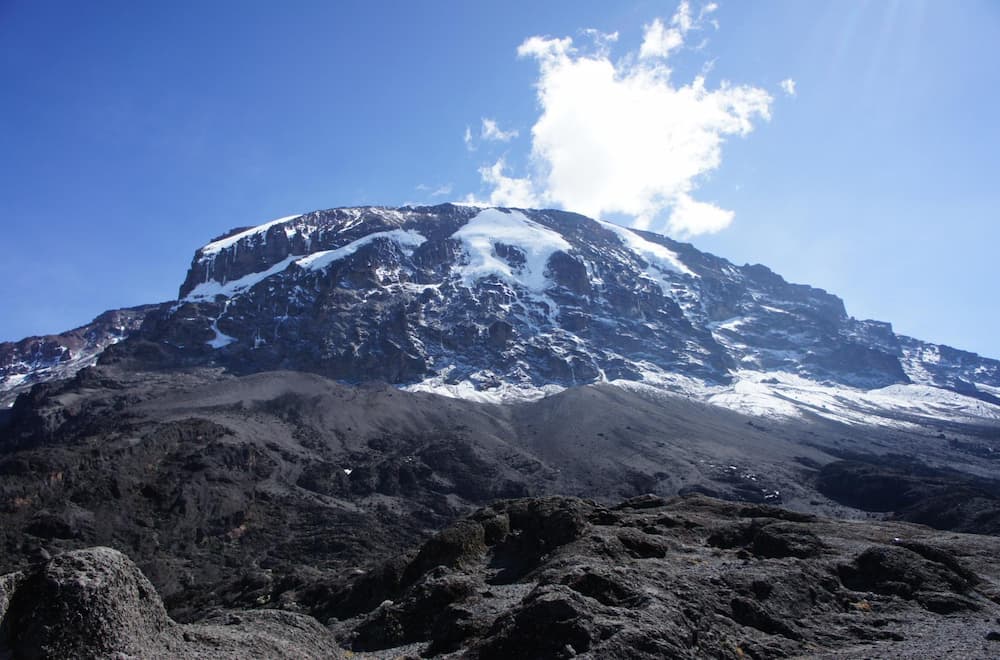Do you want to defeat Africa’s highest peak Mount Kilimanjaro? You are in the right place! Kilimanjaro is a dream destination for many trekking enthusiasts, but choosing the right time to climb is crucial to your success and happiness. Eternal Himalaya, we’ll delve into the best times tohike Kilimanjaro, to help you choose the right time for your trip.
Snow-capped Mount Kilimanjaro at the top of the African plateau is a bucket list climb for many adventure enthusiasts. But before you lace up your shoes and pack your bags, there’s one important question to answer. When is the best time to climb Kilimanjaro? The answer depends on a variety of factors, from the weather to personal preference. We’ll explore the different seasons, what to expect at each season, and what might be best for you.
choosing the right season
Climbing Kilimanjaro is no small feat, depending on the time of year you travel, your experience can vary greatly. Weather conditions, trail conditions, and even fellow climbers can affect your hike. Some months have clear skies and mild temperatures, while others can bring heavy rain, slippery roads, and fewer people. Understanding the pros and cons of each season will help you make informed decisions to maximize your results and enjoy the journey.
The Climate of Kilimanjaro
- Kilimanjaro's climate is influenced by altitude and proximity to the equator. It features five distinct ecological zones:
- Cultivation Zone (800-1,800 meters): This zone includes farmland and villages.
- Forest Zone (1,800-2,800 meters): A lush rainforest teeming with wildlife.
- Heather-Moorland Zone (2,800-4,000 meters): Open grasslands with shrubs and small trees.
- Alpine Desert Zone (4,000-5,000 meters): Barren landscapes with extreme temperatures.
- Arctic Zone (5,000-5,895 meters): Glaciers and snowfields are prominent at the summit.
The mountain has unpredictable weather, and conditions change rapidly as one ascends through these zones. However, Kilimanjaro has two main seasons: the dry season and the rainy season. We'll do coverage on what each type of season entails.
The Dry Seasons: January to March and June to October
Dry seasons form the best times to climb Kilimanjaro. This is due to stable weather and clear skies during such months, which are split into two periods: January to March, and September to November.

January to March
Advantages
- Mild Temperatures: The January to March period falls within one of the warmest times of Mount Kilimanjaro, with temperatures that are especially so at lower altitudes.
- Clear Skies: Often, these days begin and end in obvious fashion, bringing out a view of the land that is truly breathtaking.
- Fewer Crowds: This period, compared to the mid-year dry season, has fewer climbers and provides a much calmer scene of events.
Disadvantages,
- Increased Rainfall Towards March: The closer you get to March, the greater the chance of rain, mainly in the lower zones. This can lead to muddy trails and poor visibility.
- Cold Summit Nights: Although days are scorching, nights can get freezingly cold, especially closer to the summit. Proper gear is essential.
June to October
Advantages
- Best Weather Conditions: June to October is considered the best time to climb Mount Kilimanjaro. It generally offers stable weather with minimal rain and clear skies.
- Excellent Summit View: The dry season seems to guarantee fine views from the top, with the summit often cloud-free and providing breathtaking panoramic views.
- Easier Trails: Because of the lack of rain, the trails are less slippery, which may be significant to your advantage during the ascent.
Disadvantages,
- Full Trails: This is Kilimanjaro's high season, so you can expect more fellow climbers, especially in July and August.
- Higher Prices: With demand comes slightly higher prices for both flights and trekking services.
- Cold Temperatures: Days are very nice, but nights can be very cold, especially at high altitudes.
Rainy Seasons: March to May and November to December
While less favoured by climbers, the rainy seasons have their benefits for those who would not mind braving the elements.

March to May
Advantages
- Fewer Climbers: If you prefer solitude, then this is the best time to climb. The trails are far less crowded, offering a much more peaceful experience.
- Lush Scenery: The rains bring the forest and moorland zones to life with their vivid greenery and blooming flowers.
Disadvantages,
- Heavy Rain: The long rain season falls from March to May, where frequent downpours make trails muddy and challenging.
- Poor Visibility: Clouds and mist can obscure views, particularly in the forest and moorland zones.
- Increased Difficulty: Slippery trails and wet conditions raise the difficulty level by requiring more stamina and determination to tackle the climb.
November to December
Advantages
- Less Crowded: Just like the long rainy season, this short rainy season accommodates a few climbers on the mountain.
- Lower Costs: With fewer tourists, it is a more pocket-friendly season, with competitive prices for tours and accommodations.
Disadvantages,
- Unpredictable Weather: The short rains are less reliable but may still be wet and muddy.
- Shorter Days: As this is the end of the year, days are shorter, which might reduce the time available for hiking.
Month-by-Month Breakdown
The following month-by-month breakdown can help you plan your Kilimanjaro expedition:
January
Weather: Warm with clear skies; occasional rain towards the end of the month.
Crowds: Moderate, with fewer climbers as compared to the peak season.
Best For: Climbers who want to strike a balance between good weather and manageable crowds.
February
- Weather: It has warm days and cool nights, just like January.
- Crowds: Slightly higher than in January but still less crowded than in June to October.
- Best For: Climbers who prefer fine weather and don't mind a bit more company on the trails.
March
- Weather: This is the start of the long rainy season; the rain increases as the month progresses
- Crowds: Fewer climbers since the rainy season begins
- Best For: Those seeking solitude and are prepared to get wet
April
- Weather: Heavy rain for a prolonged period, especially in the lower zones
- Crowds: Very few climbers as the trails are for the most empty
- Best For: Experienced hikers, looking for a testing and quiet climb
May
- Weather: Starting to tail off towards the end of the month.
- Crowds: Few; most avoid climbing this time of year.
- Best For: Budget-conscious adventurers seeking solitude.
June
- Weather: Dry season starts; clear, mild.
- Crowds: Getting bigger as peak season is near.
- Best For: Climbers seeking stable weather and don't mind more people on the mountain.
July
- Weather: Peak of dry season; perfect climbing conditions.
- Crowds: Very high; expect many other fellow climbers.
- Best For: Those who prefer to climb in the best weather conditions possible, despite the crowds.
August
- Weather: Similar to July with very dry and clear skies.
- Crowds: A busiest month on Mount Kilimanjaro.
- Best For: The climbers who prefer fine weather over solace.
September
- Weather: Still dry but with temperatures starting to cool.
- Crowds: High but slightly less busy compared to July and August.
- Best For: People who want good weather and few people compared to July and August.
October
- Weather: Climbing during the dry season, with very little rain.
- Crowds: Medium, as peak season is dying down.
- Best For: Climbers seeking fine weather without throngs of people.
November
- Weather: A brief rainy season starting to set in; conditions are unstable.
- Crowds: Low, as there are fewer climbers along the trails.
- Best For: Kind-of-adventurous travellers who do not mind a little rain and prefer peace.
December
- Weather: Rainy days with occasional drier ones during the latter half of the month.
- Crowds: Low, except during the holiday Christmas season when more climbers are around.
- Best For Anyone seeking a true holiday adventure
Special Considerations:
.jpg)
Some climbers seek to summit Mt Kilimanjaro during the full moon or on New Year's Eve. Here's what you need to know:
- Full Moon Climbs: A full moon brightens the trails, making night hiking easier, and the landscape is more magical. These, however, are popular dates, so be prepared for a lot of climbers on the mountain.
- New Year's Climbs: The thrill of spending New Year's on Kilimanjaro is a special feeling. However, this time of year experiences poor weather with rain and cold temperatures. Adding to this fact, prices may be higher because of the demand.
People also asked
1. How difficult is it to climb Mount Kilimanjaro?
Climbing Kilimanjaro is difficult but has potential for human beings with an amazing degree of fitness. The difficulty in large part relies upon the course chosen, the weather, and the way nicely you acclimate to the altitude. The summit stands at 5,895 meters (19,341 ft), and altitude illness is a primary mission. Training and proper acclimatization are key.
2. What is the best season in 12 months to climb Kilimanjaro?
The satisfactory times to climb Kilimanjaro are in the course of the dry seasons, which are from January to mid-March and from June to October. These intervals offer greater strong weather, making the climb much less treacherous. However, the mountain can be climbed year-round.
3. How long does it take to climb Mount Kilimanjaro?
The length of the climb depends on the course taken. Most routes take between five to 9 days. Longer itineraries permit better acclimatization, which will increase the possibilities of accomplishing the summit. The Marangu Route (5-6 days) and the Machame Route (6-7 days) are among the maximum popular.
4. Do I want a guide to climb Kilimanjaro?
Yes, Tanzanian law calls for all climbers to be accompanied through an authorized manual. Most humans are part of prepared tours, which encompass guides, porters, and cooks. The courses play an essential position in ensuring your protection, coping with the logistics, and assisting you acclimatize.

Conclusion:
For whom is the best season to climb Kilimanjaro, though? That depends on your personal preference, experience level, and what you hope to extract from the climb. Here is a quick run-down to help you make your decision.
If You Prefer the Best Weather Conditions
June to October is your best window. More stability in the weather, clearer skies, and more reliable trail conditions can be expected during these months. However, also expect larger crowds and higher costs.
If You Seek Solitude and a Quieter Climb:
Although there are off-peak months, the months between March and May and November to December offer a more tranquil setting while the trade-off is a rather wet and muddy trail, which makes it uninteresting for hiking. These months are perfect for seasoned trekkers who don't mind a little rain and want to avoid the hubbub.
January to March is a good compromise. The weather is generally good, and the trails aren't as busy as in the middle of the year during the dry season. It's an excellent period for climbers who'd love the weather to be decent yet without too many people around.
Unique Experience:
Think about a full moon or New Year's Eve climb. The full moon climb is magical with its moonlit ascent, while the summit climb for New Year's Eve is a one-of-a-kind way to usher in a new year. Keep in mind that these themed climbs are in high demand. So, you will want to call in your reservations early and layer up as it will be a bit chillier.
Climbing Mount Kilimanjaro is a once-in-a-lifetime adventure, and the time of year can make all the difference. Whether you're looking for the best weather, thin crowds, or a unique experience, there is just the right time of year for anyone to take on Africa's highest peak. You should be physically and mentally ready for the task you will face at any time of the year. Be physically and mentally prepared for the task, and don't forget to pack the proper gear for the conditions ahead.
Thus, by developing considerate thoughts of the diverse pros and cons of each season, you will be able to comfortably plan your Kilimanjaro expedition to ensure a successful and enjoyable climb. So, when will you make your ascent? The summit awaits.
Contact us for more inquiries related to this blog at Eternal Himalaya





.jpg)

